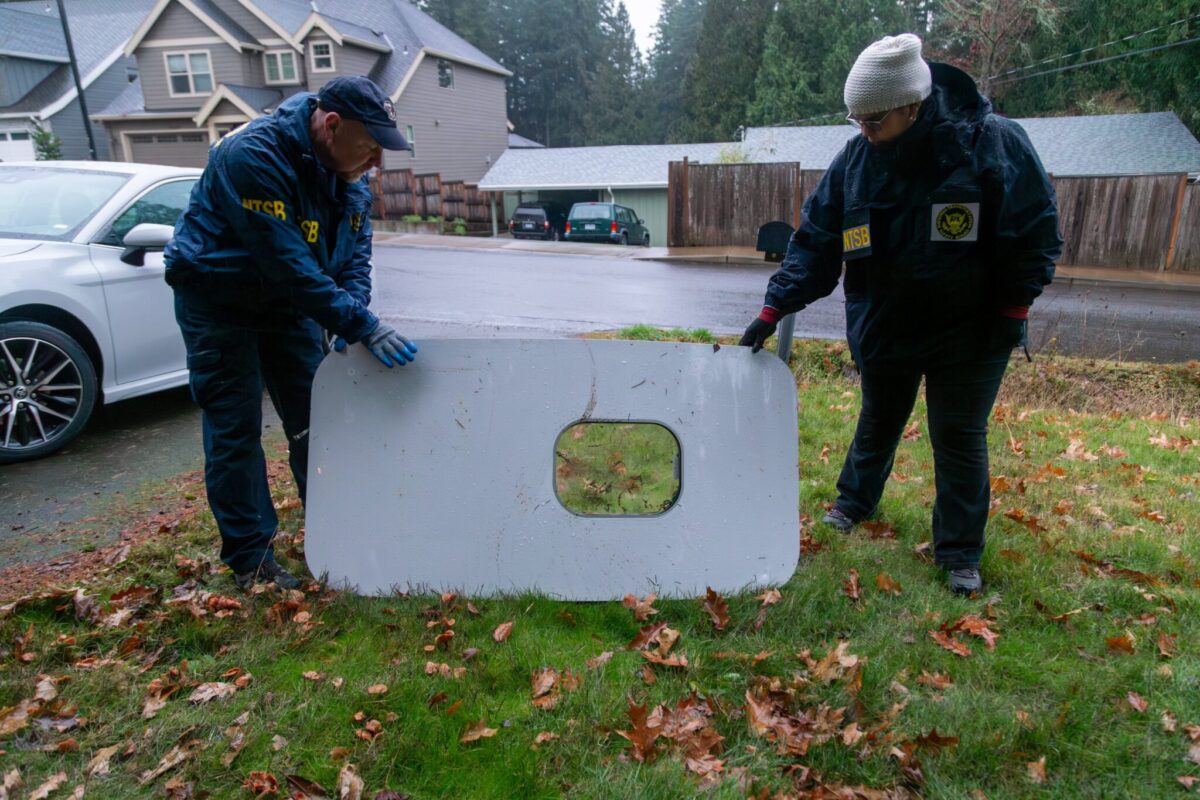New Questions Raised About Missing Bolts on Alaska 737 Max 9

Skift Take
Federal officials investigating Friday’s Alaska Airlines door blowout are looking into whether the bolts meant to keep a door plug in place were ever installed, or went missing at a later stage.
Four bolts should have kept the left door plug secure to prevent it from moving upwards and disengaging from the Boeing 737 Max 9, National Transportation Safety Board Chair Jennifer Homendy said during a Monday night press conference.
Those four bolts were also missing when the NTSB recovered the door plug, making it unclear if they were ever there to begin with.
“We don't know if they were there or if, again, they came out during the violent explosive decompression event,” Homendy said.
Rapid decompression
On Friday, the left door plug on the fuselage of an Alaska 737-9 for flight AS 1282 suddenly blew off. The plane was about 16,000 feet in the air shortly after taking off from Portland, Oregon. The aircraft experienced a rapid and explosive decompression but the crew was able to land safely back in Portland and no one was seriously injured.
The accident prompted the Federal Aviation Administration to temporarily ground certain 737-9s for further inspection. United Airlines and Alaska are the only two U.S. carriers that operate the 737-9, prompting them to cancel hundreds of flights. Copa Airlines and Aeromexico were also affected by the grounding since they fly the same typeof 737-9s on routes to the U.S.
The FAA said on Monday the affected carriers could begin inspecting their 737-9s after approving a method that complies with its emergency airworthiness directive. However, the FAA said the 737-9 would remain grounded until the agency deemed it is safe to operate.
More loose items found
The NTSB findings come as United and Alaska both reported finding some loose hardware in their initial inspections of their 737-9s, dealing a significant blow to Boeing, which has faced numerous issues with the 737 Max fleet.
Boeing’s 737-8s were involved in two fatal crashes in Indonesia and Ethiopia, prompting the FAA to ground the aircraft for nearly two years. The loose bolts found in some initial inspections of the 737-9 now put the aircraft manufacturer under scrutiny again.
Boeing CEO David Calhoun, along with several other executives, plan to host a company-wide safety webcast on Tuesday in response to the accident with the Alaska jet.
“As operators conduct the required inspections, we are staying in close contact with them and will help address any and all findings,” Boeing said in a statement on Monday. “We are committed to ensuring every Boeing airplane meets design specifications and the highest safety and quality standards. We regret the impact this has had on our customers and their passengers.”
Cockpit door opened
As the door plug fell off, the pilot and first officer said in interviews with the NTSB that they heard a loud bang and felt some air pressure changes in their ears. Then, the cockpit door flung open, and a flight attendant tried to close it several times.
The NTSB said it found early in its investigation that the cockpit door of the 737-9 was designed to open during rapid decompression, but no one on Alaska’s flight crew was aware. Homendy said Boeing would make changes to its manual for flight attendants and other crew members.
The NTSB chair also clarified that the cabin pressure warnings on December 7, January 3 and January 4 did not appear to be correlated to the expulsion of the door plug. But Homendy said the NTSB is still investigating and would look at flight recorder data, along with data on cabin pressure of the aircraft.
Those cabin pressure warnings led Alaska to decide that this particular 737-9 could not be flown over water to Hawaii, in case it needed to make an emergency landing.
Travel disruptions for United and Alaska are expected to last at least through the middle of the week. The operational impact on other affected carriers such as Turkish Airlines is believed to be minimal.





